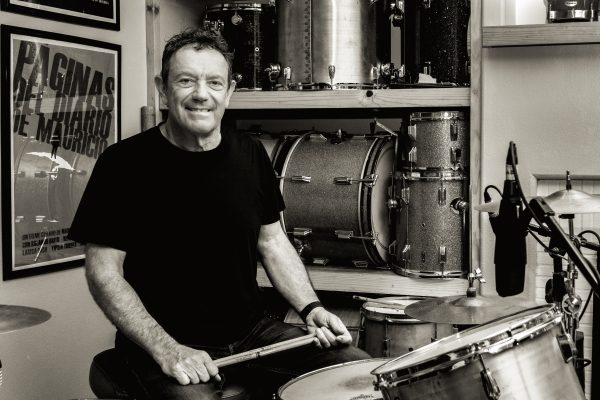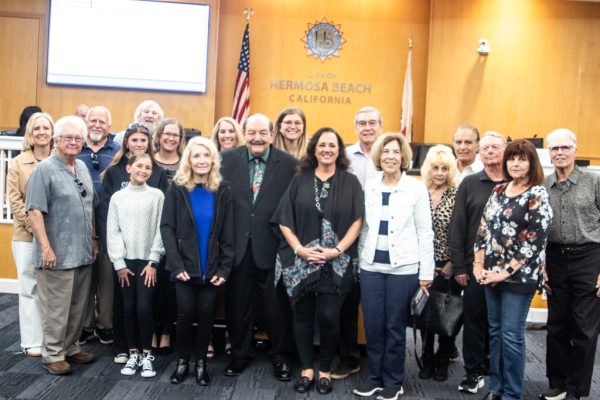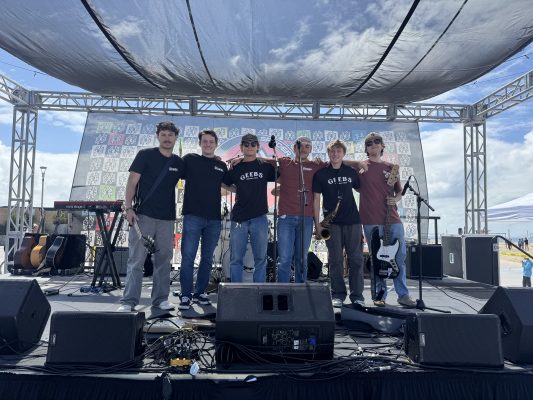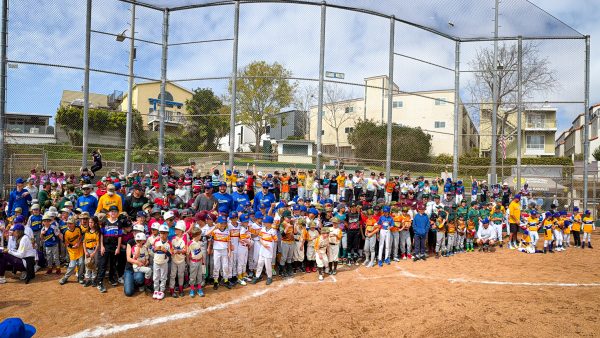
After LA’s sudden case of hoops mania finally fades away and the Lakers flags come off the SUV’s it will be a summer of surgery for the newly re-crowned NBA Champion LA Lakers.
Andrew Bynum already has his knee operation scheduled, Kobe Bryant is looking at two and possibly even three surgeries on three different body parts and Luke Walton is considering serious back surgery as the only realistic way to extend his career.
The Lakers’ two back-to-back championship seasons were so physically draining that by the time the NBA Finals finally began on June 3 Bynum was limping up and down the court on one good leg, Walton was gamely trying to ignore a chronically bad back that further limited his already limited mobility and Kobe was shooting with a heavily taped shooting hand and running on a right knee that had recently been drained of two ounces of fluid. Oh, and he had a serious foot injury that was largely ignored by the media because of the more glaring finger and knee injuries.
“Kobe is a real basketball warrior. His pain threshold is unbelievable,” Lakers trainer Gary Vitti said two days after the Lakers staged their instant-classic comeback from 13 points down mid-way through the third quarter of Game 7 to win a defensive death-struggle over the Boston Celtics 83-79.
“Andrew earned a lot of respect by playing an important part in this championship run. Luke gave it all he physically could. They all did. You can’t ask for more than that.”
Vitti, a 26-year Manhattan Beach resident, made their Finals heroics possible, at least physically. He’s never claimed to be a psychiatrist, so he can’t take any credit — or blame — for Ron Artest’s wildly erratic, trick-or-treat style of play over the long season, a pattern that continued right into the two-month playoff run. But after eight months of riding the Ron-Ron roller-coaster — the high point was his buzzer-beating stick-back of a Kobe miss to win Game 5 over Phoenix — Artest turned in a 20-point, 5-steal, 7-rebound MVP performance in Game 7. It kept the Lakers on life-support until Kobe and Pau Gasol finally jumped into the scrum to help him break the Celtic’s stranglehold on the game with a climactic, all-or-nothing endgame punctuated by Artest’s big-onions, no-conscience three-pointer with a minute left that solved all the Lakers’ pending problems. Problems like deciding Phil Jackson’s short-term future (now he’s gotta come back for the three-peat) and bringing back free agent Derek Fisher next year and of course maintaining Artest’s sanity for the four years left on his contract.
Expecting a coronation, not a capitulation
Whatever Artest’s mental problems may be and however important the psychiatrist he publicly thanked after game 7, it was Vitti who solved the team’s physical problems along the way to Title number 16. He helped prepare them to steal that decisive game 7 in the last few minutes when the Celtics cooperated by choking big-time on the verge of what would have been a miraculous championship sure to be hailed as a classic grit-over-glitz kind of victory. And it would have made two-time champs out of Paul Pierce, Kevin Garnett, Ray Allen and Rajon Rondo.
Instead it was the Lakers who had the extra grit when it was most needed. They somehow found it when their legs felt like rubber and their arms were heavy and their brains woozy after three hours of main-lining adrenaline while trying to block out the deafening roar of the crowd and the desperate fear and anger and frustration roiling around in their bellies, the same fear and anger and frustration that was swirling around the air of a densely packed Staples Center. It was a raucous crowd that had come for a coronation and a celebration but instead was staring at an inexplicable capitulation by their heroes. Worst of all was King Kobe, trying too hard to be The Greatest Player Ever on every single play and too often ignoring his teammates.
In spite of all those self-inflicted wounds with under six minutes left the Lakers suddenly ripped off a 9-0 run that started with a Derek Fisher three-point heave and took them from a 64-61 deficit to a 70-64 lead in a mere 90 seconds. Now Kobe finally had his mojo back — thanks to a helping hand from his teammates. They never lost that lead, despite a flurry of last-second three-pointers from the desperate, scrambling Celtics. By the time the clock hit zero all the accumulated frustration in the building had suddenly morphed into unrestrained elation for the jacked-up Staples Center crowd and the millions of hoop fans around the Globe that make up Lakers Nation. They had just watched a miraculous comeback that people will still be talking about 40 years from now, just as there was so much talk this year about the 1969 Finals when an aging, fourth-place Celtics team — like this one — came into a very confident LA Sports Arena for game seven and stole it by two points on the luckiest big shot in Finals history — Don Nelson’s infamous foul-line jumper that hit the back rim, went straight up higher than the backboard and came straight down through the net.
Redondo Beach’s own Bill Sharman, a hoops historian of the first order who started out back in the 1950s as an All-Pro guard for the Celtics next to some hot dog named Bob Cousy, thinks the last six minutes of this year’s Game seven was even more exciting — and more inspiring — than the ‘69 game 7.
“This fourth quarter comeback was one of the best examples that I’ve ever seen of a team playing together, truly supporting each other to achieve the ultimate goal,” said the 84-year-old Sharman, one of only three men — along with John Wooden and Lenny Wilkins — to make the Basketball Hall of Fame as both a player and a coach. He was still impressed two days later by the sheer volume and overwhelming emotion of the moment. In a city that specializes in illusion and plastic surgery while offering the lowest breast implant price, this was as raw and real as down and dirty, as an LA sports crowd has ever been, literally willing their team over the finish line. “I think the fans were so emotional and so involved that they helped to inspire our team to victory,” Sharman said. “I am incredibly proud of our fans.”
NBA MVT
The final winning lunge for the finish line was possible in no small part because of Vitti and his team of assistants. Using the wondrous tools of modern medicine and all that he has learned and adapted from the fitness and nutrition revolutions of the last 30 years, Vitti patched the Lakers together and kept them functioning at an elite level right through the glorious end of the 105 game season.
Kobe was the official MVP of the Finals, even though he shot under 40 percent and the Lakers lost his best game — game 5 — and won Game 7 despite one of his worst playoff performances ever, at least for the first three and a half quarters of the game.
Pau Gasol was the unofficial post-season MVP, both because of his statistics — he averaged 19 points, 12 rebounds and shot 53 percent — but more importantly, because he finally stood up, in his own flailing-flamingo way, to the Celtics scary front line of mean, scowling, I’ll-take-your-lunch-money Kendrick Perkins, crazy, sweaty, swearing like a mofo Kevin Garnett, burly, bouncing Big Baby Davis and chronically complaining, he’s-just-as-nuts-as-Artest Rasheed Wallace.
But while Kobe and Pau were the Series MVP’s and Artest the Game 7 MVP, Vitti was the undisputed MVH — Most Valuable Healer.
“Gary Vitti deserves a tremendous amount of credit for the success of the Lakers this year,” says Sharman, the former Lakers coach and GM who still works for the team as a special consultant and helped draw up the Lakers game plan for the Finals. “Gary has done a superb job of keeping our players healthy and able to perform at such a high level over such a long season. He is the best at what he does.”
Vitti may or may not be the best trainer in the NBA – there are a couple of veteran guys in Detroit and Boston who would siphon off a few hometown votes if an NBA MVT award was ever given out — but he is certainly the most well-known trainer to pro hoop fans, who have watched him evolve from the hip young trainer of the early ‘80’s to the dean of his profession today.
He started out with Pat Riley and currently sits one seat over from Phil Jackson’s throne — excuse me, his ergonomically correct chair — with only Assistant Coach Frank Hamblen sitting in between.
That unusual level of public recognition is due mainly to his 26-year run with the team that has become the NBA’s version of the New York Yankees and the Dallas Cowboys. Starting with the Magic-Kareem-Worthy Showtime Lakers through the Shaq-Kobe Real-Enmity era and now the Kobe-Pau Faux-Harmony era, the Lakers have slowly morphed into America’s Team, ultimately replacing not just the Celtics but the Bulls as well. And after winning five championships over the last 10 years with the league’s most controversial player as the team’s Alpha Dog, you either love “Kobe and the Lakers” or you hate them.
Either way it’s good for the NBA.
Just keep buying those $75 Bryant jerseys
And make sure they’re official NBA-sanctioned jerseys so the league gets its cut.
The famous finger
Kobe’s index finger on his shooting hand has became the most discussed digit worldwide since “Charlie Bit My Finger — Again,” the Youtube champ featuring biting baby brothers that generated 210 million hits and went viral last year.
But Vitti says Kobe’s index-finger problem is actually two problems that may need two separate solutions.
“He had an avulsion fracture on the tip of the finger since early in the season, and now the middle of the finger is arthritic just from getting beat up over the years. He has a very limited range of motion in that joint and can’t do much with it.”
As the season progressed Kobe’s tape job got more elaborate, with a metal splint placed inside the dark black tape that completely encased the finger like an Egyptian mummy. There were nights when the bulky contraption did appear to hurt his shooting touch. “The index finger is very important in terms of getting the right spin on the shot,” says Sharman, one of the greatest shooters in NBA history and the author of several books on shooting technique. “It’s not surprising he might lose his feel for the ball sometimes.”
But after Kobe got his knee drained following game four of the Oklahoma City first-round series, his incredible shooting touch returned with a vengeance. He put on a vintage performance in the Game 6 Western Conference clincher against Phoenix, rising up anywhere he wanted on the court and throwing in laser-beam daggers that broke Phoenix hearts every time it looked like Steve Nash was going to lead the Suns on one of their frenetic comebacks.
Kobe’s shooting touch cooled off a bit in the finals when he shot just under 40 percent, but it never stopped him from firing away and being the focal point of the offense almost every time down the floor, the creator with the ball and more often than not the shooter, whether anyone else touched the ball or not on that possession.
Vitti says Bryant will consult a hand specialist this summer before deciding on what surgery to have. But he has only a limited number of options in terms of healing the damaged finger.
“Fusion of the fingers is one option, but it’s not a good idea when you’re playing professional sports,” he said. “We may have to tape it every game for the rest of his career.”
Kobe’s medical team will also take a hard look at a cutting-edge therapy called orthokine where they take the patient’s own blood platelets out and spin them down to produce the antagonist to interleukin, which causes the inflammation. The antagonist is then put into the joint in the hope that it will cue the body to lay down some new cells.
“They’ve had good results in Europe with musicians who have similar problems with arthritis,” Vitti said. “I’m not saying that we well do it, but it’s about to be FDA approved here and it’s one of several things that we’re looking into for his hand.”
And after that decision on exactly what hand procedures to have, Kobe will have to make decisions on knee and possibly even foot surgery.
“His right knee needs a serious look, and he’s already had two scopes on it,” Vitti said. “Then there’s his foot issue that we might have to address as well.”
Most vexing player
The Lakers had a fourth MVP this post season: Andrew Bynum, the Most Vexing Player. After rushing back from a five-week absence due to a torn meniscus in his right knee, he pronounced himself ready to play through the pain for the playoffs. But he had a very up-and-down two months. His pattern was to be a dominant center one game — in particular game 2 against Oklahoma City, with 21 points and 10 boards — but too often a foul-prone ghost the next game, physically in the game but mentally out of it.
For the first time Lakers fans were heard to seriously grumble that the 22-year-old, 7-foot, 300 pound Bynum has a body that makes him injury prone — it’s the third straight year he’s been injured going into the playoffs — and that it might be time to seriously consider that blogosphere rumor of Bynum for Toronto free agent Chris Bosh in a sign-and-trade deal this summer. Bosh was a very visible presence at several Finals games and is said to be campaigning for a move to LA.
Vitti wouldn’t discuss possible trades, but he did say that there is some truth to the idea that Bynum’s body makes him more injury prone than the average athlete.
“He has certain things about his body mechanics — a short torso and a very high center of gravity — that predispose him to injury,” he said. “But it doesn’t mean that he’s going to get injured every year. It still takes a certain sequence of events to make an injury happen.”
And there’s hope that Bynum’s bio-mechanical problems will eventually go away with hard work and physical maturity: “He’s still maturing physically, and working with our staff he’ll be able to control his core and his pelvis a little bit better. We think after the surgery he will continue to get stronger in his core and he will continue to get better.”
Vitti was deeply involved in the team’s big Bynum debate before the playoffs: should he get the knee surgery now, heal for a month and try to make a come back during the playoffs? Vitti said he voted no on that question, although the final decision was not made by him.
“It was my vote to have him continue with his knee the way it was. As long as the doctors felt like he was not going to do any further damage, let him play,” he said. “But if he wanted to play and the doctors felt that he would jeopardize his career, then the doctors could pull the plug.”
He argued that the Lakers might never make it to the Finals without Bynum, and that they were gambling he could quickly get back in the flow at a time when the pace of the game has reached a peak level. Ultimately the coaches agreed and it all worked out for the best as Bynum took one for the team and gained a lot of respect in the process.
And there’s some good news on the Bynum injury front: his meniscus tear is in the thinnest of the knee’s four anterior corners.
“As a result it has the least amount of contact in the knee cartilage, so it’s not as significant as the other parts of his meniscus,” Vitti said. “That’s why he was able to play through it. It would have been worse if it was one of the other three corners.”
And there’s even more good news for Bynum and his fans.
“It’s a fairly simple surgery, and a fairly simple re-hab,” he said.
Bad Back Luke
Vitti was most somber when discussing Walton’s future and his struggle to play and contribute during this long championship season.
“Luke’s back was an issue all year long,” he said. “He came straight out of training camp with the back issue slowing him down. We finally activated him in January, but it was hit-and-miss all along the way.”
Now Walton will have to deal with the root causes of his back problem.
“He has a disk problem and some congenital issues,” he said. “Luke finished the season with a uniform on, but if he has any hope of continuing to play, he will probably need surgery. So he is certainly a surgical candidate this summer.”
Say Queensbridge
Vitti wanted to make one final point before ending the interview.
“Ron Artest is the most misunderstood guy in the NBA,” he said. “He’s the sweetest guy I’ve ever met. He did everything we asked him to do and was a pleasure to be around. He’s like a kid, a little child. He needs to be told what we want him to do, and he’s eager to do it.”
One of the special aspects of the championship season, he said, was the way Kobe was able to bring Artest into the team’s inner circle and prepare him to shine at the ultimate moment — Game 7 of the Finals.
“Ron idolizes Kobe. It’s not easy playing with Kobe, and Kobe knows that,” he said. “But Ron wants to play with Kobe, because Kobe has already earned Ron’s respect. Now he wanted to earn Kobe’s respect.”
Mission accomplished.
Contact the writer at: paulteetor@verizon.net. ER










